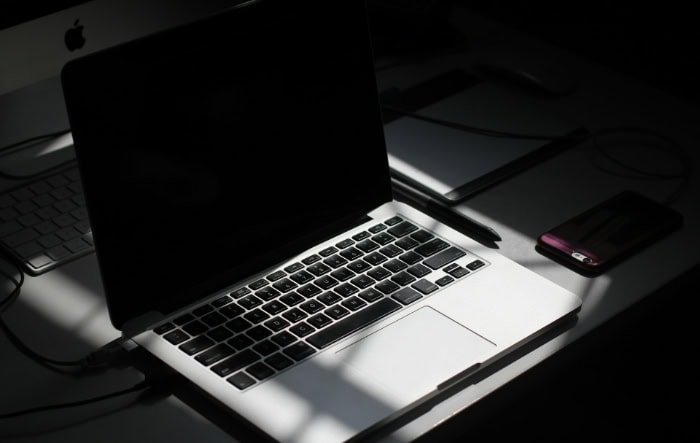MacBook Not Turning On but Charging: Troubleshooting Guide

A MacBook that charges but refuses to turn on presents a unique challenge for users. This seemingly contradictory behavior can leave many feeling helpless and confused.
However, armed with the right knowledge and a systematic approach, you can often diagnose and resolve the issue without immediately resorting to professional help. From simple power cycling techniques to more advanced hardware checks, there are numerous steps you can take to troubleshoot your unresponsive MacBook.
Understanding the Problem
When a MacBook charges but fails to turn on, it can be a puzzling and frustrating experience. This issue can manifest across various MacBook models, from older versions to the latest releases.
Before diving into troubleshooting steps, it's crucial to grasp the common symptoms and potential causes of this problem.
Common Symptoms Across MacBook Models
MacBooks experiencing this issue typically display several telltale signs. The most obvious is the device's inability to power on despite being connected to a power source.
Users might notice that the charging indicator light illuminates, suggesting the battery is receiving power. However, pressing the power button yields no response—no startup chime, no Apple logo, and no sign of life on the display.
In some cases, users might observe intermittent signs of activity. For instance, the keyboard backlight might briefly flicker, or the fan might spin up momentarily before the device goes silent again.
These fleeting signs of life can be particularly confusing, as they suggest the MacBook is partially functional but unable to complete the boot process.
Possible Causes
Several factors can contribute to a MacBook charging but not turning on. These causes range from hardware issues to software problems and power management complications.
Hardware problems often lie at the root of this issue. A faulty logic board, for example, can prevent the MacBook from powering on even when it's receiving charge.
Damaged power components, such as the power management unit or the battery connector, can also lead to this behavior. In some instances, a failing hard drive or solid-state drive might cause the MacBook to stall during the boot process, giving the impression that it's not turning on at all.
Power management issues form another category of potential causes. The System Management Controller (SMC), responsible for various low-level functions including power management, can sometimes become corrupted or malfunction.
This can result in the MacBook failing to initiate the startup sequence properly, even when plugged in and charging.
Software-related causes, while less common in cases where the device shows no signs of booting, can still play a role. If the MacBook manages to partially boot before stalling, corrupted system files, incompatible startup items, or issues with the operating system itself might be to blame.
These software problems can sometimes manifest as a black screen, leading users to believe the device isn't turning on at all.
Initial Diagnostic Steps
Before diving into more complex troubleshooting methods, it's essential to perform some initial diagnostic steps. These preliminary checks can provide valuable insights into the nature of the problem and guide your subsequent actions.
Checking for Signs of Life
The first step in diagnosing a MacBook that won't turn on is to look for any subtle signs of activity. Even if the device appears completely unresponsive, there might be small indications that it's receiving power or attempting to function.
Start by examining the LED indicators on your MacBook. Depending on your model, you might see a power indicator light on the front edge or near the power button.
If this light is on or pulsing, it suggests that the MacBook is receiving power. For models with illuminated keyboards, try pressing the caps lock key and see if its light responds.
Any response from these LEDs indicates that at least some components of your MacBook are functional.
Next, listen carefully for any sounds coming from your MacBook. The startup chime, present in older models, can provide valuable information.
If you hear this sound, it means your MacBook is attempting to boot. Even in newer models without the startup chime, you might hear the fan spinning up briefly or the hard drive making noise.
These sounds suggest that your MacBook is receiving power and trying to initiate the startup process.
Finally, pay close attention to the screen. Even if it appears black, there might be a faint backlight visible in a dark room.
This could indicate that your MacBook is powering on but experiencing issues with display output.
Assessing Physical Condition
A thorough physical inspection of your MacBook can reveal potential causes of the problem. Start by examining the exterior for any signs of damage.
Look for dents, cracks, or other visible marks that might indicate the MacBook has been dropped or subjected to physical stress. Pay particular attention to the areas around the ports and the seams of the device, as damage in these areas can affect internal components.
Next, check for any signs of liquid damage. Water exposure can cause corrosion and short circuits, leading to power issues.
Look for water stains, discoloration, or residue around the keyboard, ports, and vents.
One critical aspect to assess is the condition of the battery. In some MacBook models, a swollen battery can prevent the device from turning on properly.
Carefully inspect the bottom of your MacBook for any bulging or unevenness. If your MacBook doesn't sit flat on a surface or if the trackpad feels raised, this could indicate a swollen battery.
In such cases, it's crucial to avoid using the MacBook and seek professional assistance immediately, as swollen batteries can pose safety risks.
Using Power Button Combinations to Trigger Responses
Sometimes, specific power button combinations can elicit a response from an unresponsive MacBook. These combinations can help reset certain components or force the device to attempt booting in different modes.
Start by pressing and holding the power button for at least 10 seconds. This action forces your MacBook to shut down completely if it's in a hung state.
After releasing the button, wait a few seconds and try turning it on again.
If that doesn't work, try a more advanced combination. Press and hold the power button along with the left Shift key, left Option (Alt) key, and left Control key for about 10 seconds.
This combination attempts to reset the System Management Controller (SMC) on some MacBook models.
For newer MacBooks with the T2 security chip, you can try pressing and quickly releasing the power button, then immediately pressing and holding it until you see the startup options window. This can sometimes trigger the boot process if other methods fail.
Basic Hardware and Power Management Solutions

After completing the initial diagnostic steps, it's time to move on to more hands-on solutions. These basic hardware and power management techniques can often resolve issues that prevent your MacBook from turning on.
Proper Power Cycling Techniques
Power cycling is a simple yet effective method to resolve many electronic device issues, including those affecting MacBooks. This process involves completely draining the residual power from your device's components and then restarting it.
To properly power cycle your MacBook, start by unplugging it from the power adapter. If your model has a removable battery, take it out. For MacBooks with non-removable batteries, skip this step. Press and hold the power button for at least 10 seconds. This action helps discharge any remaining power in the system.
After holding the power button, wait for about 30 seconds. This pause allows time for any capacitors to fully discharge. If you removed the battery, reinsert it now. Plug your MacBook back into the power adapter and attempt to turn it on by pressing the power button.
This process can help reset various internal components and potentially resolve power-related issues that prevent your MacBook from booting up.
Inspecting and Cleaning Power Connections
Sometimes, the problem lies not with the MacBook itself but with its power connections. Dirty or damaged connectors can prevent proper charging and power delivery, leading to startup issues.
Carefully inspect the MagSafe or USB-C port on your MacBook, depending on your model. Look for any debris, dust, or lint that might be obstructing the connection.
If you notice any foreign objects, gently remove them using a soft, dry brush or compressed air. Be cautious not to damage the delicate pins inside the port.
Next, examine the power adapter and its cable. Check for any signs of fraying, kinks, or other damage.
Ensure that the adapter's plug is clean and free from debris. If you have access to another compatible power adapter, try using it to rule out issues with your original charger.
Clean the power port and adapter connections using a soft, lint-free cloth. Avoid using liquids or abrasive materials, as these can cause damage.
Once cleaned, firmly connect the power adapter to both the MacBook and the power outlet, ensuring a secure fit.
Resetting the System Management Controller (SMC)
The System Management Controller (SMC) manages various low-level functions of your MacBook, including power management. Resetting the SMC can often resolve issues related to power, battery, and other hardware functions.
Instructions for Intel-based Macs
For MacBooks with non-removable batteries, follow these steps:
- Shut down your MacBook.
- Connect the power adapter.
- On the built-in keyboard, press and hold the left Shift key, left Control key, and left Option (Alt) key.
- While holding these keys, press and hold the power button for 10 seconds.
- Release all keys and the power button.
- Press the power button to turn on your MacBook.
For older MacBooks with removable batteries:
- Shut down your MacBook and remove the battery.
- Press and hold the power button for 5 seconds.
- Reinsert the battery and connect the power adapter.
- Press the power button to turn on your MacBook.
Note on M1/M2 Macs
Apple Silicon Macs (M1 and M2) do not have a user-resettable SMC. Instead, these models automatically reset the equivalent of the SMC when you shut down your Mac and wait for a short period before restarting.
Disconnecting and Reconnecting the Battery
For MacBook models with user-accessible batteries, disconnecting and reconnecting the battery can sometimes resolve power-related issues. This process is similar to a hard reset and can help if your MacBook is stuck in a power state that prevents it from turning on.
To perform this step:
- Ensure your MacBook is unplugged from the power adapter.
- Flip your MacBook over and locate the battery compartment.
- Remove the screws securing the battery cover (if applicable) and carefully lift it off.
- Disconnect the battery from the logic board. This usually involves gently unplugging a connector.
- Wait for about 30 seconds.
- Reconnect the battery, ensuring the connector is securely attached.
- Replace the battery cover and screws.
- Connect the power adapter and attempt to turn on your MacBook.
Advanced Hardware Troubleshooting

If basic troubleshooting steps haven't resolved the issue with your MacBook, it's time to move on to more advanced hardware diagnostics. These techniques can help isolate potential hardware problems and provide valuable information for further action.
While some of these steps may require a bit more technical know-how, they can be crucial in determining the root cause of your MacBook's startup issues.
Connecting to an External Display
Sometimes, a MacBook that appears unresponsive might actually be booting up but experiencing display problems. Connecting your MacBook to an external display can help determine if this is the case.
To test this, connect your MacBook to an external monitor using the appropriate cable (HDMI, Thunderbolt, or USB-C, depending on your model). If you see an image on the external display, it indicates that your MacBook is indeed powering on and functioning to some extent.
This could mean that the issue lies with your MacBook's built-in display or its connection to the logic board.
If you don't see any output on the external display, try adjusting the brightness using the function keys on your MacBook's keyboard. In some cases, the display might be active but set to its lowest brightness setting.
No output on the external display doesn't necessarily mean your MacBook isn't turning on, but it does suggest that the problem might be more severe than just a display issue.
Removing and Reseating RAM
For MacBook models with user-accessible RAM, removing and reseating the memory modules can sometimes resolve startup issues. This process can help if the RAM has become loose or if there's a poor connection.
Before attempting this, ensure your MacBook is unplugged and powered off. Consult your MacBook's user manual or Apple's support documentation for specific instructions on accessing the RAM slots, as the process varies between models.
Once you've located the RAM:
- Carefully remove the RAM modules from their slots.
- Inspect the gold contacts on the RAM for any signs of corrosion or damage.
- If the contacts look clean, gently reinsert the RAM modules, ensuring they're firmly seated in their slots.
- Reassemble your MacBook and attempt to power it on.
If your MacBook starts up after this process, it's possible that loose RAM was the culprit. If it still doesn't turn on, try booting with only one RAM module at a time (if you have multiple) to identify if a faulty module is causing the issue.
Testing with a Known-Good Power Adapter
Power adapter issues can sometimes mimic more serious hardware problems. To rule out your power adapter as the source of the problem, try using a known-good adapter that's compatible with your MacBook model.
Borrow a power adapter from a friend or family member with a similar MacBook, or use a spare if you have one. Ensure the wattage and connector type match your MacBook's requirements. Connect this adapter to your MacBook and attempt to power it on.
If your MacBook turns on with the alternative adapter, it indicates that your original power adapter was likely faulty. In this case, replacing the power adapter should resolve the issue.
Identifying Common Hardware Failure Points
While not all hardware issues can be diagnosed without professional tools, there are some common failure points you can check for:
- Battery issues: A completely depleted or faulty battery can prevent your MacBook from turning on, even when plugged in. If possible, try running your MacBook without the battery, using only the power adapter.
- Logic board problems: Signs of a faulty logic board include repeated kernel panics before the failure, graphical glitches, or the MacBook shutting down unexpectedly. Unfortunately, logic board issues usually require professional repair.
- Hard drive or SSD failure: If you hear clicking or grinding noises from your MacBook, it could indicate a failing hard drive. For SSDs, the symptoms are usually silent, but you might notice extremely slow performance before the failure.
- Loose cable connections: Internal cable connections can sometimes come loose, especially in older MacBooks. This can cause various issues, including failure to power on. While fixing this requires opening the MacBook, it's often a simple repair for a technician.
- Thermal issues: Overheating can cause a MacBook to shut down and fail to restart until it cools. If your MacBook feels unusually hot or you hear the fan running at high speed constantly, thermal issues might be the culprit.
Identifying these common failure points can help you communicate more effectively with a technician if professional repair becomes necessary. Remember, opening your MacBook may void its warranty, so consider this carefully before attempting any internal repairs yourself.
Seeking Professional Assistance

Despite your best efforts, there may come a point where professional help becomes necessary to resolve your MacBook's power issues. Recognizing when to seek expert assistance can save you time, prevent further damage, and ensure your device receives the proper care it needs.
Clear Indicators It's Time for Professional Help
While many MacBook issues can be resolved through DIY troubleshooting, certain signs indicate that professional intervention is necessary. If you've exhausted all the previous troubleshooting steps and your MacBook still won't turn on, it's likely time to consult an expert.
Other indicators include unusual noises coming from the device, signs of physical damage, or evidence of liquid exposure.
Additionally, if you notice a burning smell, see smoke, or feel excessive heat emanating from your MacBook, stop attempting to power it on immediately and seek professional help. These symptoms could indicate serious electrical issues that pose safety risks.
If your MacBook is relatively new or still under warranty, persistent issues are best addressed by Apple or an authorized service provider to avoid voiding your coverage. For older devices, professional diagnosis can help determine if repair costs are justified compared to the cost of a replacement.
Understanding Apple's Repair Programs and Warranty Coverage
Before seeking repairs, it's crucial to understand your MacBook's warranty status and any applicable repair programs. Apple provides a one-year limited warranty on new MacBooks, which covers manufacturing defects but not accidental damage.
If you purchased AppleCare+ for your device, your coverage extends to three years and includes accidental damage protection (subject to service fees).
To check your warranty status, visit Apple's support website and enter your device's serial number. This will provide information on your current coverage and eligibility for repair programs.
Apple occasionally offers repair programs for known issues affecting specific MacBook models. These programs may provide free repairs or extended warranty coverage for certain problems, even if your standard warranty has expired.
Check Apple's website or contact Apple Support to see if your MacBook qualifies for any current repair programs.
Choosing Between Authorized Service Providers and Independent Repair Shops
When seeking professional repairs, you have two main options: Apple Authorized Service Providers (AASPs) and independent repair shops. Each option has its advantages and considerations.
AASPs are certified by Apple and use genuine Apple parts. They're the best choice if your MacBook is under warranty or covered by AppleCare+, as their repairs won't void your coverage.
AASPs also have access to Apple's diagnostic tools and repair information, ensuring your MacBook receives standardized, high-quality service.
Independent repair shops often offer more competitive pricing and may be able to repair older MacBook models that Apple no longer supports. Some independent shops specialize in board-level repairs, which can be more cost-effective for out-of-warranty devices with complex issues.
However, their repairs may void any remaining Apple warranty or AppleCare+ coverage.
Consider factors such as your MacBook's age, warranty status, the complexity of the issue, and your budget when choosing between these options. For newer devices or those under warranty, AASPs are generally the safest choice.
For older MacBooks or if you're looking for potentially lower-cost repairs, reputable independent shops can be a viable alternative.
Preparing Your MacBook for Service
Before taking your MacBook for professional service, there are several steps you should take to protect your data and facilitate the repair process:
- Note any passwords or passcodes associated with your MacBook. You may need to provide these to the technician if they need to access your device during repairs.
- Gather relevant information about your MacBook, including its model number, serial number, and any AppleCare+ details. This information will help streamline the service process.
- Document the issue thoroughly. Write down all the symptoms you've observed and any troubleshooting steps you've already taken. This information can help technicians diagnose the problem more efficiently.
- Remove any external accessories or cases from your MacBook. This ensures the technician can easily access the device and prevents any personal items from being lost during the repair process.
By taking these preparatory steps, you'll help ensure a smoother repair experience and protect your personal data. Remember to communicate clearly with the technician about the issues you've experienced and any concerns you may have about the repair process.


